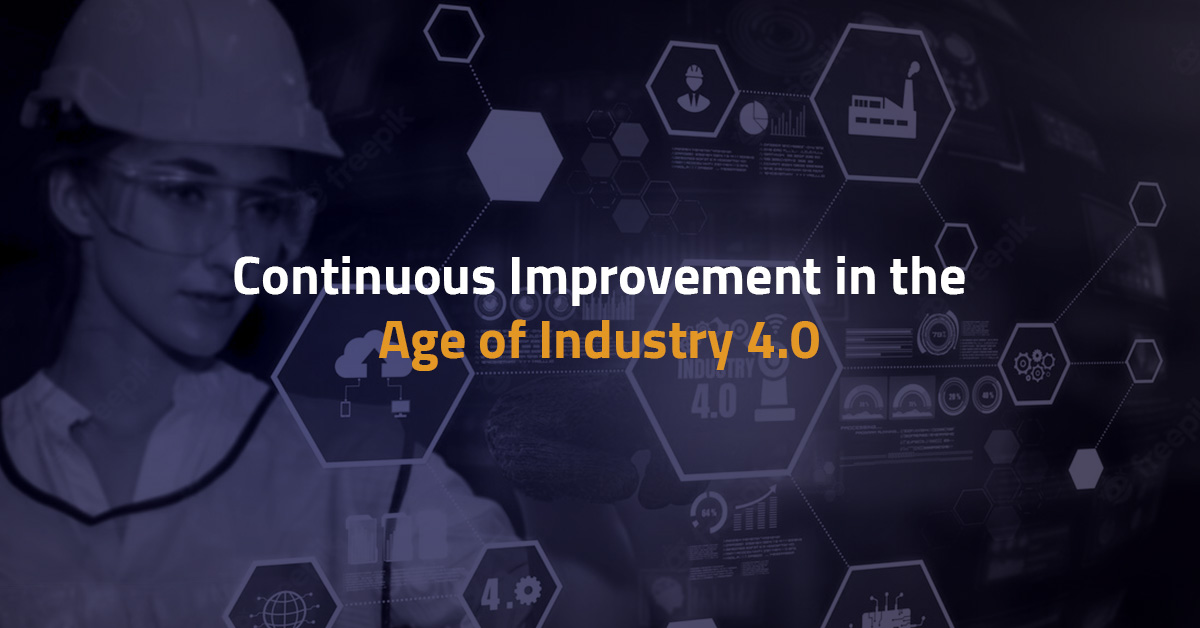Continuous Improvement in the Age of Industry 4.0

In the age of digital transformation, it is not surprising that commonly used business processes and methodologies are evolving to reflect the fast pace of technology. The manufacturing industry has long followed the lean philosophy of continuous improvement in order to minimize waste and increase manufacturing productivity. However, with the arrival of Industry 4.0, one must understand how continuous improvement can be adapted to meet technological demands.
Continuous Improvement and the PDCA Cycle
Continuous improvement is an integral part of lean manufacturing and encourages a culture of constant development and advancement. Applying its principles to every process within manufacturing operations can ensure fairly straightforward resolutions of problems.
In such an improvement-oriented environment, efficiently solving operational challenges is essential. The PDCA cycle, which originated with Dr. W. E. Deming’s lectures in 1950, is a systematic process for problem-solving and continuous improvement. It uses a four-step structure as follows:
Step 1: Plan – Determine what has to be accomplished and the expected results.
Step 2: Do – Implement the objectives that were decided in the plan.
Step 3: Check – Assess the extent of success (or failure) of the implementation.
Step 4: Act – Study and analyze the process and understand what can be improved and what should be replicated.
Historical Limitations of the PDCA Cycle
Historically, manufacturers have used a pen-and-paper approach to document processes. With our current knowledge of the speed and efficiency of digital tools, we definitely know that there are many constraints in manual processes, and this is not the ideal method for documentation. However, despite the advent of technology, many manufacturers still use legacy methods such as pen-and-paper or manually-created spreadsheets on the computer. This largely limits the efficacy of the PDCA cycle as follows:
– Insufficient information on the real-time status of projects
– No easy access to historical data of projects
– Difficulties in disseminating data across the value chain
– Likelihood of more errors because of manual data collection
– Limited ways to analyze data and conduct simulations
PDCA, Continuous Improvement, and Industry 4.0
Industry 4.0, or the fourth industrial revolution, has resulted in a number of emerging technologies, such as the Industrial Internet of Things (IIoT), cloud computing, artificial intelligence, big data analytics, and even robotics. The primary objectives of Industry 4.0 are aligned with those of lean manufacturing – continuous improvement, waste minimization, and better productivity. Therefore, continuous improvement and the PDCA cycle can greatly benefit from Industry 4.0.
Using a Data-first Approach to Achieve Continuous Improvement 4.0
A common conundrum faced by manufacturers is where they must begin the implementation of their Industry 4.0 initiatives. While it might seem better to start directly using advanced tools such as sensors and big data analytics, one must first establish a robust data foundation. Collecting data at the shop floor level and integrating it at all touch points is critical for incorporating the PDCA cycle in an Industry 4.0 context.
Connect DATA can be your gateway to Industry 4.0 and continuous improvement. Get in touch to know more!




